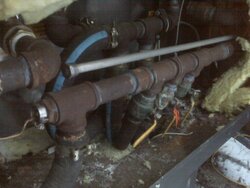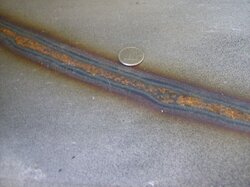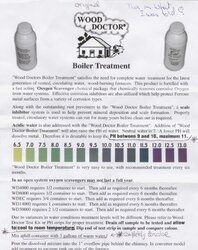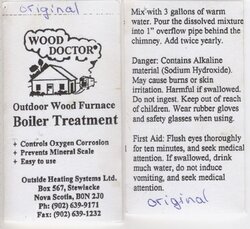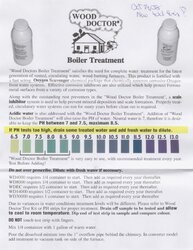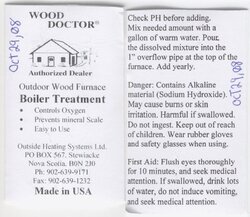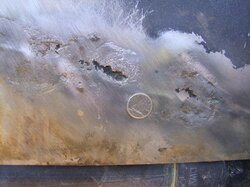I am the not so proud owner of my second 2000 lbs stainless steel exterior wood furnace sold to me by Wood Doctor.
My original furnace developed perforations in it's belly causing it to loose all it's water in only it's second heating season. I managed to make it to spring by holding vigilance over ten or so pine plugs hammered into the holes to stop the leaks! :red:
I received a replacement stainless steel boiler that has now just barely made it threw it's third heating season this time developing perforations primarily along the belly weld lines! :sick:
So what can be done to reduce the corrosion problems in open systems? :question:
Well one thing I have done is introduce an anode into the piping on the back of my Wood Doctor hoping for the best!
A picture is worth a thousand words . . . see below!
A standard DHW anode is inside the black iron with a ground wire strapped on to ensure it's grounded (above is my spare anode).
Well, it should have help tremendously! My boiler is supposed to be high quality heavy gauge Stainless Steel after all! :-/
Perhaps on another product, it would have made a great difference! :zip:
Leaky :down:
My original furnace developed perforations in it's belly causing it to loose all it's water in only it's second heating season. I managed to make it to spring by holding vigilance over ten or so pine plugs hammered into the holes to stop the leaks! :red:
I received a replacement stainless steel boiler that has now just barely made it threw it's third heating season this time developing perforations primarily along the belly weld lines! :sick:
So what can be done to reduce the corrosion problems in open systems? :question:
Well one thing I have done is introduce an anode into the piping on the back of my Wood Doctor hoping for the best!

A picture is worth a thousand words . . . see below!
A standard DHW anode is inside the black iron with a ground wire strapped on to ensure it's grounded (above is my spare anode).

Well, it should have help tremendously! My boiler is supposed to be high quality heavy gauge Stainless Steel after all! :-/
Perhaps on another product, it would have made a great difference! :zip:
Leaky :down:


